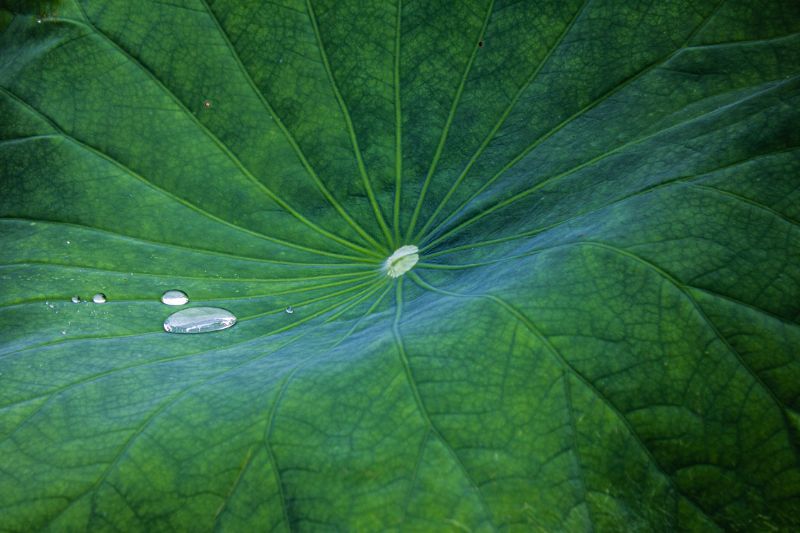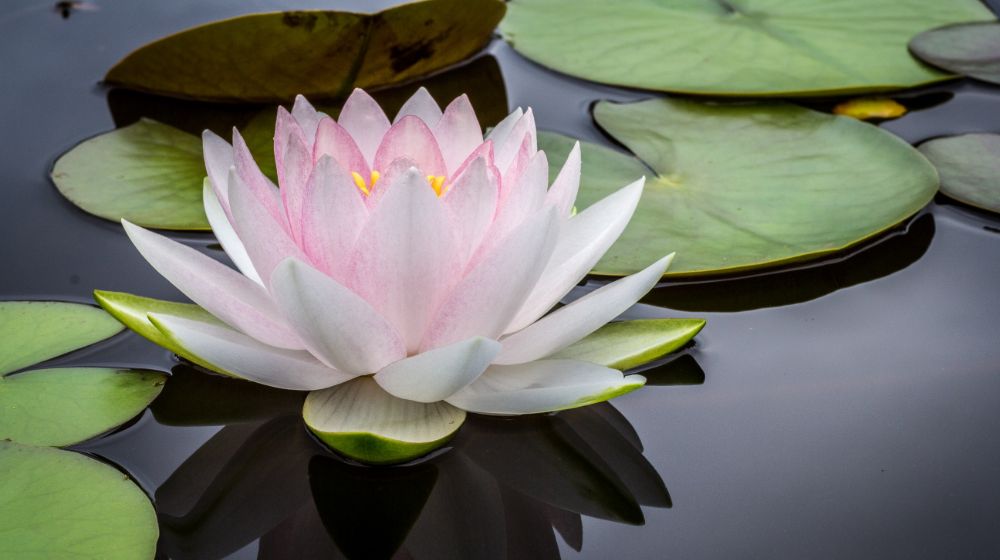The lotus leaf is one of the oldest ingredients of traditional East and Southeast Asian medicines. Despite this, studies on it have only started coming out recently.
Here are the answers to some of your most common questions about this plant.
RELATED: Sencha Green Tea And Its Benefits
Lotus Leaf | Frequently Asked Questions

What Is Lotus Leaf?

The lotus plant, with the scientific name Nelumbo nucifera, is a plant that belongs to the Nymphaeaceae family. The lotus leaf, simply put, is the leaf of the lotus plant that is known to have a wide variety of applications.
Often confused with water lilies, the lotus plant is a perennial plant shaped like a bowl. The plant has over a hundred different species, though the white single-flower lotus that has about two dozen petals is the most popular one.
Other lotus types include the double-flowered lotus. These sub-species of the lotus plant can have more than a hundred petals and often come in either red or pink varieties.
According to a 2014 paper, the lotus goes by several names such as the sacred lotus, the Chinese water lily, and the Indian lotus.
Most of the plant's parts have all been used in a number of ways traditionally in many cultures. This includes the plant's leaves, seeds, flowers, and even parts of its stem that grow underground called the rhizome.
In a 2013 study published in the journal Resonance, the significance of the lotus as India's national flower was detailed.
In this country, the lotus, which has existed for millions of years, is considered sacred. It has been cultivated for over 3,000 years for use in medicines, food, and other religious and cultural traditions.
In the Buddhist religion, the plant symbolizes serenity and is often placed at their shrines. It is also considered the symbol of fertility in Chinese culture and is used as a plate in religious ceremonies in the rural areas of Bengal.
The paper goes on to discuss how, historically, the plant was used for medicinal purposes. It was believed to be an effective astringent for a wide number of ailments. Its seeds were used in olden times to help suppress vomiting and even to alleviate some skin diseases.
In some cultures, they are also used for baking, cooking, and adding flavors to beverages. In East and Southeast Asian cultures, the lotus plant is a traditional part of both their cuisines and medicines.
While the plant's medicinal uses go back centuries, the science behind it has only been studied for a couple of years.
Can You Eat a Lotus Leaf?

Yes, the lotus plant, and its leaves, are edible. With its antioxidant properties and many health benefits, the lotus is a nice addition to a lot of popular dishes.
In a recent study published in the Journal of Preventive Nutrition and Food Science, it was explained how the lotus has been consumed as food for more than 7,000 years in Asia. Its roots, seeds, and leaves are all cultivated for consumption until today.
The roots that have a texture similar to a potato are often used in cooking. One of the most popular dishes that use this as an ingredient is called the lotus root stir-fry.
The stem of the plant is also full of nutrients like Vitamin C and minerals like potassium. These vitamins and minerals help boost the body's immune system and regulate blood pressure.
Fully grown lotus leaves are also used as a food wrapper. These can grow to as much as 2 feet in length.
Young leaves are also gathered before they start unfurling. These, on the other hand, can be steamed or consumed raw.
In many Asian markets, lotus leaves are sold either dried or frozen.
RELATED: Foods You Can Eat On A Ketogenic Diet For Weight Loss
What Is Lotus Leaf Good For?

The lotus leaf has a ton of benefits that most people do not know about.
According to a study published in the Indian Journal of Pharmaceutical and Biological Research, the lotus plant possesses elements that promote antiviral and antioxidant activity in the body. It also helps induce anti-obesity activity and anti-inflammatory effects for the user.
The study further adds that the lotus plant also has anti-bacterial and cardiovascular benefits.
Recent studies also show that red and white lotus seeds also help reduce inflammation. A symptom or side effect of various conditions, inflammation often causes a sensation of heat. It is often the result of physical injury, chemical exposure, or trauma.
The study found that polysaccharides in the lotus plumule have significant anti-oxidant properties and anti-inflammatory effects.
Zooming in, the lotus leaf is often used traditionally in its juice form as a treatment for diarrhea. A 2015 study confirms the effectiveness of this treatment. It goes on to add that leaf extract also helps in treating sweating and in stopping bleeding.
Finally, another recent study shows that the lotus plant also has some benefits to the skin. In particular, researchers demonstrated how lotus extract, when applied to the face, helps in reducing sebum secretions.
This is useful in treating people who have acne, a condition caused by elevated sebum levels.
Is Lotus Leaf Good For Weight Loss?

In a 2020 study published in the journal Applied Biological Chemistry, it was explained that the lotus leaf does help with weight loss. The study investigated in particular the lotus leaf extract's anti-obesity effects.
It was found that consuming the extract not only helps reduce body weight but also controls fat accumulation. It also helps promote the body's decomposition of cholesterol and triglyceride while promoting the oxidation of fat.
Furthermore, the lotus leaf aids in regulating lipid metabolism. In obese patients, it also helps alleviate liver damage and inflammation.
Now that you know about the many benefits of the lotus leaf, learn how to make lotus tea with this video courtesy of Dream Catcher Botanicals:
The lotus plant is one of the oldest ingredients used in traditional medicines. While studies on the effectiveness of the plant's medicinal uses have only come out recently, they all affirm the belief that the lotus leaf, stem, flower, roots, and seeds all have tons of health benefits for its users.
Do you have other questions about the benefits of the lotus leaf? Ask them in the comments section below!
Up Next:
- Top 10 Diabetes Herbal Treatments From Around The World
- Effective Ways To Lose Fat (And How To Keep It Off)
- How Is White Persian Melon Tea Different From Other Teas?
Please stay connected with us on Facebook, Pinterest, Instagram, and Twitter. Join our community here and Feel Better, Look Better and Live better with us.
Trending
Best Multivitamin for Men | Top 10 Best Multivitamins for Men 2022
Tongue Color | 7 Scary Tongue Color Meanings
Get Updates
SIGN UP FOR OUR NEWSLETTER TODAY


Best Multivitamin for Men | Top 10 Best Multivitamins for Men 2022

